
Mobee Royal Family Orginal Slave Relics Museum
The Mobee Royal Family Original Slave Relics Museum is a small museum housed in a nineteenth century colonial building. It showcases the role of the local 'Chief Mobee' in the enslavement of local Africans during the transatlantic slave trade, as well as the role of his son (and successor) in abolishing slavery in the area.
The museum houses one exhibition which discusses the arrival of Europeans to the Badagry area and the origins of the trade in human beings. Artefacts highlight the brutal nature of the capture and the enslavement of African people. These include yokes, chains, a mouth lock that presented the captives from speaking, and handcuffs for children. Other objects are examples of trade goods that were received by the Chief in exchange for a supply of people. Text interpretation also provides visitors with information about the terrible conditions faced by the enslaved during the Middle Passage, and images provide representations of life on the plantations.
The museum is often visited as part of a 'Black History Tour' with the former slave market and the Black History Museum.

Old Residency Museum
The Old Residency Museum is housed in a colonial building, designed in Scotland and shipped to Nigeria during the 1880s. It previously housed the British colonial administration in Nigeria. The museum holds the largest collection of Nigerian documents and artefacts in the world. It focusses on the history of the Calabar and Cross River Regions, as well as slavery, and is managed by the National Commission for Museums.
The first exhibition encountered by visitors on their entry to the museum explores the four centuries of the trade in people that permeated Nigeria and the region. There is a significant display of European items that were used as trade goods in exchange for enslaved Africans. This includes Venetian glass beads, pewter pots, ceramic pots, shaving sets and guns. Other displays include items that illustrate the brutal nature of enslavement, including chains and manacles.
The museum's other exhibition examines the production processes of palm oil, as one of the most important exports to Calabar, after the abolition of the slave trade.
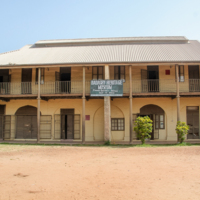
Badagry Heritage Museum
The Badagry Heritage Museum is housed in the former district officer’s office that was constructed in 1863. The museum attempts to highlight the injustice and horror of the transatlantic slave trade, whilst also exhibiting the rich histories and cultures of Africa. There is a specific focus on the heritage of pre and post-transatlantic slave trade in Badagry. The museum consists of eight galleries each dealing with particular themes relating to local heritage and the transatlantic slave trade. Guided tours are available. The museum is managed by the Nigerian Cultural Commission.Each of eight galleries are named after a part of the transatlantic slave trade. The first, the 'Introductory Gallery', focuses on the founding and early history of Badagry. The next five galleries all deal specifically with distinct phases of the slave trade, from capture, transportation, material culture, resistance, and industry. In these galleries are objects that illustrate the brutal nature of enslavement, including shackles and manacles, as well as replicas of slave ships. The seventh gallery examines the forced integration of the enslaved into the countries they were transported to, featuring videos of reconstructed slave auctions. Finally, the last gallery explores abolition movements and the persistence of slavery even after its legal end. The museum has attempted to incoporate the voices of local people within the displays, as well as depicting the significance they place on certain cultural and historical items within the museum. In addition to the historical collections, there are also some examples of contemporary art throughout, showing modern reflections on the systems of enslavement.
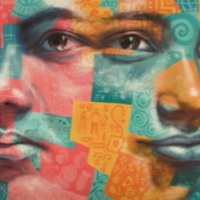
Aduke
Despite having the lowest regional prevalence of modern slavery in the world, Europe remains a destination, and to a lesser extent, a source region for the exploitation of men, women and children in forced labour and commercial sexual exploitation. Trafficking for sexual exploitation is the most widespread for of modern slavery with an 84% of victims trafficked for this purpose. The majority of those trafficked for this purpose are women and young girls who often originate from Eastern Europe within the EU as well as Sub-Saharan Africa, with the majority of people being trafficked from Nigeria to various parts of Europe including Italy, France, Spain and the UK through an array of complex trafficking networks. Aduke, a Nigerian teenager, was sold as an adult and forced in to prostitution on the streets in both the south of France and the UK.
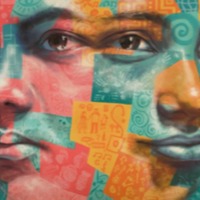
Princess
Despite having the lowest regional prevalence of modern slavery in the world, Europe remains a destination, and to a lesser extent, a source region for the exploitation of men, women and children in forced labour and commercial sexual exploitation. Trafficking for sexual exploitation is the most widespread form of modern slavery with an 84% of victims trafficked for this purpose. The majority of those trafficked for this purpose are women and young girls who often originate from Eastern Europe within the EU as well as Sub-Saharan Africa, with the majority of people being trafficked from Nigeria to various parts of Europe including Italy, France, Spain and the UK through an array of complex trafficking networks. Princess, 43, was trafficked from Nigeria into prostitution in Italy
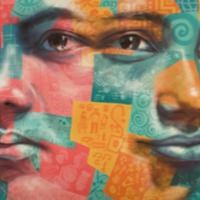
Grace A
The UK National Crime Agency estimates 3,309 potential victims of human trafficking came into contact with the State or an NGO in 2014. The latest government statistics derived from the UK National Referral Mechanism in 2014 reveal 2,340 potential victims of trafficking from 96 countries of origin, of whom 61 percent were female and 29 percent were children. Of those identified through the NRM, the majority were adults classified as victims of sexual exploitation followed by adults exploited in the domestic service sector and other types of labour exploitation. The largest proportion of victims was from Albania, followed by Nigeria, Vietnam, Romania and Slovakia. Grace was just 10 years old when her parents died and she was forced to live on the streets of Lagos. A few years later she met a woman who said she was looking for someone to help her around the house. Grace stayed there for 2 years. At the age of 15 she was taken to England where she was forced to work as a prostitute. Grace was able to escape after 3 months; however, she was taken to a detention centre by authorities after her asylum claim was rejected, despite being told by the police she had been trafficked.
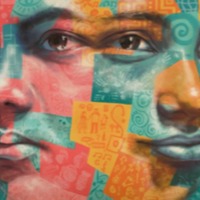
Ope
There are an estimated 11,700 people living in modern slavery in the United Kingdom. It remains a destination for men, women and children from countries across the world including Asia, Africa and Eastern Europe, often seeking opportunities for a better livelihood. The latest government statistics derived from the UK National Referral Mechanism in 2014 reveal 2,340 potential victims of trafficking from 96 countries of origin, of whom 61 percent were female and 29 percent were children. Of those identified through the NRM, the majority were adults classified as victims of sexual exploitation followed by adults exploited in the domestic service sector and other types of labour exploitation. The largest proportion of victims was from Albania, followed by Nigeria, Vietnam, Romania and Slovakia. In 2005 Ope met a man offering to help her leave her life in Nigeria and find employment and a better life abroad. Promised work as a nanny or in a factory, Ope was taken by boat to Tenerife and then flown to mainland Spain where her trafficker was waiting for her at the airport. It was then that she found out she had been trafficked in to prostitution. After being physically and sexually abused in Spain, Ope was later trafficked again to the UK where the abuse continued. Ope was finally able to escape one day when she used money and ID from a wallet found at a market to get a bus to Kings Cross station in London.
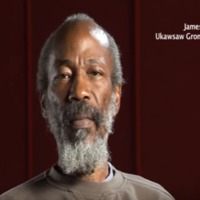
The Longest Journey: from Slavery to Abolition
The Longest Journey: From Slavery to Abolition was held at Epping Forest District Museum in October 2007. The exhibition also toured venues in the region, including the Cambridge and County Folk Museum. The exhibition examined clues in the collections of Essex museums and the Essex Record Office exploring the history of the slave trade and the abolition movement in Essex. A set of ‘Essex Links' panels revealed the Essex people and places involved, including the story of Anne Knight, Chelmsford resident and abolitionist. As part of the project, a film was commissioned for Black History Month 2007: ‘The Story of James Albert Ukawsaw Gronniosaw, an African Prince' is based on the autobiography published in 1774 by James Albert, a freed slave. Captured into slavery as a child in present-day Nigeria, once freed he travelled to England where he lived and worked in Colchester. The film features actor Shango Baku and was produced by Harvest Films and commissioned by Epping Forest District Museum, Museums in Essex Committee and Renaissance in the Regions.
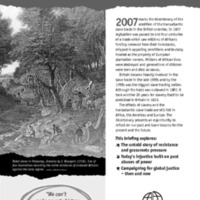
200 Years On: The legacies of enslavement and abolition
The World Development Movement seeks to increase awareness of political views in regards to world economic and social development. The organisation published a briefing in 2007 to mark the bicentenary, exploring the stories of grassroots pressure and the historic and modern campaigns for global justice. In collaboration with the University of Leeds, the World Development Movement also organised two public events looking to explore the lessons to be learned from the struggle to end the slave trade and examining contemporary campaigns in Africa and beyond for global social justice. Speakers included the Kenyan writer and academic Ngugi wa Thiong'o.
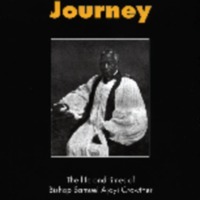
Crowther's Journey: The life and times of Bishop Samuel Ajayi Crowther
Southwark Pensioners Centre Black History Group led a project to explore the life of Bishop Samuel Ajayi Crowther. Born in Yorubaland, Nigeria, kidnapped and sold into slavery, Crowther became the Anglican church's first African-born bishop and an influential missionary in West Africa. The Crowther's Journey project involved weekly research and discussion sessions and visits to places of significance, such as the church of St Mary in Islington, where Crowther was ordained. This booklet focuses on the responses and reflections of members of the group on Crowther, his life and his legacy.
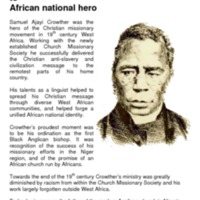
Samuel Ajayi Crowther: From slave boy to African national hero
Samuel Ajayi Crowther was Britain's first Black Anglican Bishop. He was born in Yorubaland, part of modern South Western Nigeria. After being enslaved, he was rescued at sea by the Royal Navy and began his missionary education in Sierra Leone. Crowther studied in Islington on two separate occasions: first, at St Mary’s Parochial School, and later, at the Church Missionary Society College on Upper Street. He was ordained at St Mary's Church in Upper Street before returning to Africa to begin his missionary work. His ordination as Bishop was in recognition of the success of his missionary efforts in the Niger region. His life, and connections to the London Borough of Islington, were the subject of this exhibition at Islington Local History Centre.
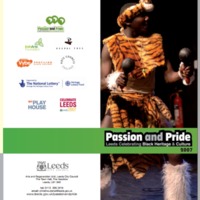
Passion and Pride
Passion and Pride was a creative partnership project bringing together Leeds City Council's Arts and Regeneration Unit with twelve local community organisations. Building on momentum established through Black History Month, the performances, exhibitions and workshops celebrated black heritage and culture in Leeds during 2007. Highlights included the performance of 'Grandma's Story' at West Yorkshire Playhouse by the 10-2 Club, a short play about the real life experience of living through slavery.
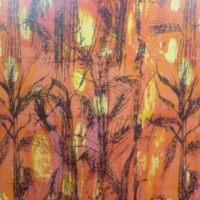
Trade and Empire: Remembering Slavery
The Whitworth Art Gallery was one of eight heritage bodies in the ‘Revealing Histories: Remembering Slavery’ partnership in Greater Manchester. The project set out to explore the history, impact and legacy of slavery on Britain through collections and community links in the North West.
'Trade and Empire: Remembering Slavery' explored the themes of trade and empire, commerce and collecting, and the impact of the experience of slavery and its legacy. Four invited artists and academics (SuAndi, Kevin Dalton-Johnson, Dr Emma Poulter and Dr Alan Rice) worked with Whitworth curators and learning staff to create the exhibition. It comprised of selections from the Whitworth's collections, contemporary works by Black artists, and objects on loan from Manchester Museum, John Rylands University Library Manchester, Bolton Museums and Archives Service and private collections. Areas of focus included a history of the Benin Bronzes, representations of Black people in British art, photographs of West Africa belonging to Tom Singleton Gardner, and printed textiles designed by Althea McNish. The exhibition was accompanied by a series of community engagement events.
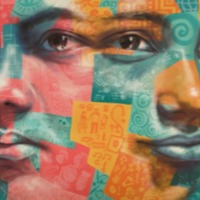
Joy
An orphan who was tricked into leaving her village in northern Nigeria in 1998, Joy Ubi-Ubi fashions the turning-point from freedom to slavery as the moment when she drank blood during a voodoo ritual. Afterwards, once Joy was in Europe, her captors said this ritual meant the “juju” would kill her if she tried to escape. As Joy explains, she was thereby “forced to do the work” of a prostitute. She was enslaved for three years in the deprived Bijlmer district of Amsterdam—home to many West African immigrants. But the narrative also includes a parallel turning-point from slavery to freedom: the moment when Joy was asked to drink something again: a liquid that would make her bleed, and miscarry. This time, she refused to take the drink. Not wanting to abort her pregnancy, she made the decision to escape, then was helped by a West African Pentecostal minister who operates mission houses in Amsterdam. This use of native West African voodoo is a common feature of the slave experience for Nigerian women held in Western Europe (of whom there are around 10,000). The women and girls undergo an initiation ritual before leaving their country: for Joy this included the marking of her face and hands, and laying hands on a “juju” (statue), as well as drinking blood. They are often made to swear to the gods that they will work hard for their employers, and will never mention their real names, run away, or contact the police. Captors threaten the women with punishment by the gods for any disobedience, and warn that any attempt to escape will awaken a curse on their families. Once in Europe they are drugged, then resold. Held in brothels, they have sex with customers but are not paid: Joy notes that all money changed hands before the clients reached her room. Any pregnancies are aborted.
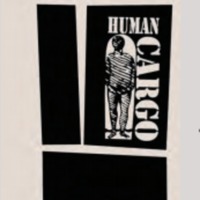
Human Cargo: The Transatlantic Slave Trade, its Abolition and Contemporary Legacies in Plymouth and Devon
Human Cargo was a partnership project between Plymouth City Museum and Art Gallery, and the Royal Albert Memorial Museum, Exeter. The project consisted of two main components. The first was a historical exhibition, which explored the development of the transatlantic slave trade and, in particular, the role of Plymouth as a port, the involvement of the City's dignitaries and the South West's links with the abolition movement. The second part was a contemporary art response to modern forms of slavery and historical legacies, including the flower picking trade, sweatshop labour and the Fair Trade Movement. This work was newly commissioned and included audio visual pieces, installations, hand-printed wallpaper and participatory objects. A variety of events and activities took place alongside the exhibition including education workshops, performances, African music and storytelling activities, and Elizabethan House re-enactment sessions.